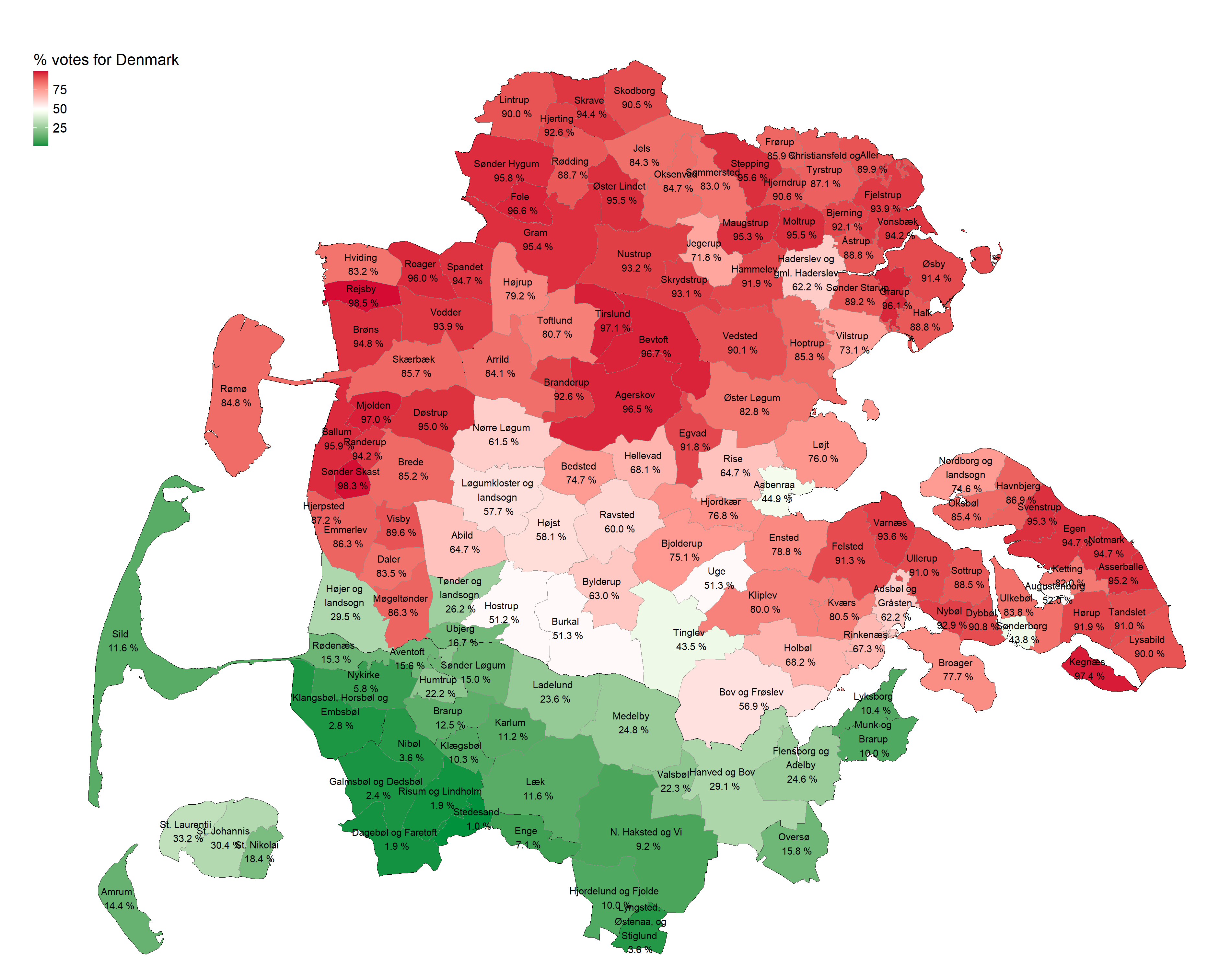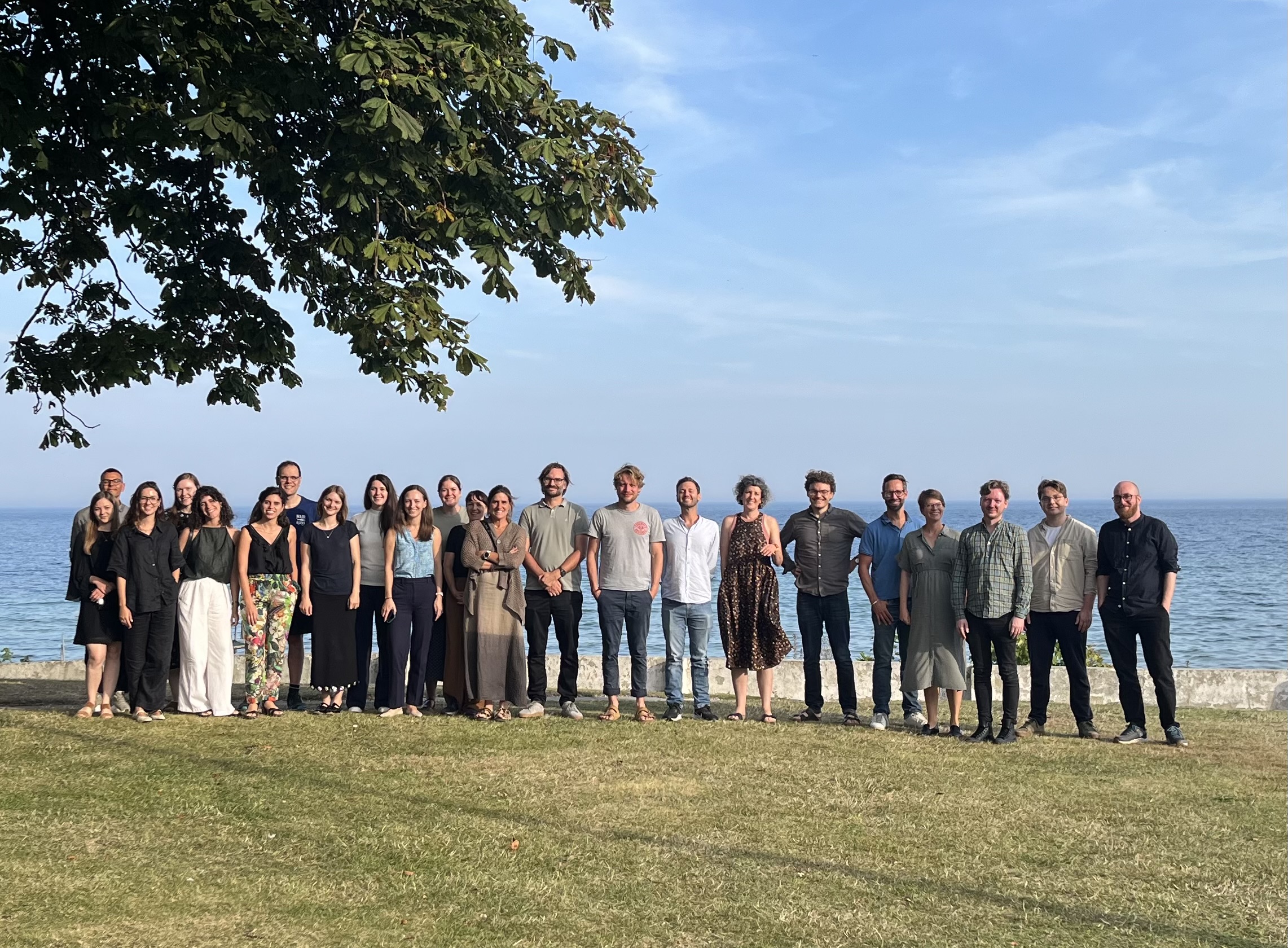Hans Henrik Sievertsen
|
|
|
Hello, I am a professor with special responsibilities at VIVE (Copenhagen),
associate professor at the School of Economics, University of Bristol, and an IZA Research Fellow. I am also co-editor of the Economics of Education Review and member of the Swedish Research Council's review panel for educational science.
You can download my CV here and contact me at: mail@hhsievertsen.net.
I do research on the economics of education, health, and gender. I am particularly interested in the role of feedback in education.
You can download my CV here and contact me at: mail@hhsievertsen.net.
I do research on the economics of education, health, and gender. I am particularly interested in the role of feedback in education.

Data
- Data from the 1920 Danish-German referendum: github repository.
- 2000 economists' tweets: github repository.
Tools
- R introduction: link.
- Applied Economics with R: link.
- Specification curve in Stata: github repository.
- TWFE simulation tool: link.

Fig 1: Data from the Danish-German 1920 referendum.
Project: "Private and Public Returns to Higher Education"
- Funded by the Independent Research Fund Denmark
- Grant: 4182-00200 (individual postdoc)
- Project period: 2015-2017
Papers
- "Grades and Employer Learning" (Hansen, Hvidman, & Sievertsen). Published in the Journal of Labor Economics
- "High-Stakes Grades and Student Behavior" (Hvidman, & Sievertsen). Published in the Journal of Human Resources
- "Cognitive fatigue influences students' performance on standardized tests" (Sievertsen, Piovesan, & Gino). Published in the Proceedings of the National Academy of Sciences
Project: "How do parents and policies shape inequality in children's wellbeing"
- Funded by the Carlsberg Foundation
- Grant: CF24-1655 (digital infrastructure)
- Project period: 2025-2026
Project: "Exam Grades, Student Behaviour, and Wellbeing"
- Funded by the Independent Research Fund Denmark
- Grant: 4284-00086B (DFF1)
- Project period: 2025-2027
Core project members
Project: "Family background, early investment policies and parental investments"
- Funded by the Independent Research Fund Denmark
- Grant: 0218-00003B (DFF2-Thematic)
- Project period: 2021-2025
Core project members
Workshops
- Rødvig, August 2024
co-organised with the grant "Inside the black box of welfare state expansion: Early-life health policies, parental investments and socio-economic and health trajectories" (PI: Miriam Wüst).

Program: [PDF]
- Helsingør, May 2025
Program: [PDF]
Papers
- "Reminder Design and Childhood Vaccination Coverage" (Hirani & Wüst). Published in the Journal of Health Economics
- "Child benefits and the well-being of new families" (Hirani, Lesner, Sievertsen, & Wüst)
- "Peers and Maternal Mental Health" (Hansen, Hirani, & Wüst). Published in the Review of Economics and Statistics
- "Inequality in infancy" (Freget, Sievertsen, & Wüst)
- "Discontinuity in General Physician Care during Pregnancy" (Freget)
- "Maternal Mental Health and Family Well-being. Descriptive Evidence from a Population Screening Program" (Freget, Hirani, & Wüst)
- "Being on the margin of being induced early because of health risks - Consequences for high-BMI mothers and their children" (Freget & Gregersen)
- "Peer effects in gender norms" (Hansen, Hirani, Sievertsen, & Tominey)
Major Projects
Work in progress
-
"Parental Minimum Wages, Children's Education, and Racial Inequality"
with Christine Valente and Luyang Chen
[pdf] -
"Playing the system: address manipulation and access to schools"
with Andreas Bjerre-Nielsen, Lykke Sterll Christensen, and Mikkel Høst Gandil
Media coverage: Weekendavisen , Berlingske
[pdf ] -
"Saving neonatal lives at scale: lessons for targeting"
with Christine Valente and Mahesh C. Puri
[pdf ] -
"Household Responses to Unconditional Child Benefits"
with Jonas Lau-Jensen Hirani, Rune Vammen Lesner, and Miriam Wüst
Publications
-
"Do female experts face an authority gap? Evidence from economics"
with Sarah Smith
Journal of Economic Behavior and Organisation (2025)
Media coverage: VoxEU, Financial Times
[pdf | link | replication files ] -
"The gender gap in expert voice: evidence from economics"
with Sarah Smith
Public Understanding of Science (2024)
[pdf | link |replication files] -
"The prevalence, trends and heterogeneity in maternal smoking around birth between the 1930s and 1970s"
with Stephanie von Hinke, Jonathan James, Emil Sørensen, and Nicolai Vitt
inBaltagi, B. and Moscone, F. (eds.) Recent Developments in Health Econometrics: A volume in honour of Andrew Jones [invited] (2024)
[pdf | link ] -
"Beyond Treatment Exposure–The Impact of the Timing of Early Interventions on Child and Maternal Health"
with Jonas Lau-Jensen Hirani and Miriam Wüst
Journal of Human Resources (2024)
[pdf | link ] -
"Grades and Employer Learning"
with Anne Toft Hansen and Ulrik Hvidman
Journal of Labor Economics (2024)
Media coverage: Weekendavisen
[pdf | link | replication files] -
"Assessments in Education"
Oxford Research Encyclopedia of Economics and Finance [invited](2023)
[pdf | link | replication files] -
"The Importance of External Assessments: High School Math and Gender Gaps in STEM Degrees"
with Simon Burgess, Daniel Sloth Hauberg, and Beatrice Schindler Rangvid
Economics of Education Review (2022)
Media coverage: View from the Lab
[pdf |link] -
"Quasi-market competition in public service provision: user sorting and cream skimming"
with Thorbjørn Sejr Guul and Ulrik Hvidman
Journal of Public Administration Research and Theory (2021)
Media coverage: UoB summary
[pdf | link |replication files] -
"Gender Disparities in Top Earnings: Measurement and Facts for Denmark 1980-2013"
with Niels-Jakob Harbo Hansen, Karl Harmenberg, and Erik Öberg
Journal of Economic Inequality (2021)
[pdf | link |replication files] -
"High-Stakes Grades and Student Behavior"
with Ulrik Hvidman
Journal of Human Resources (2021)
Media coverage: JHR news
[pdf | link | replication files] -
"Maternity Ward Crowding, Procedure Use, and Child Health"
with Jonas Maibom, Marianne Simonsen, and Miriam Wüst
Journal of Health Economics (2021)
Media coverage: Weekendavisen
[pdf | link ]"Neonatal Health of Parents and Cognitive Development of Children"
with Claus Thustrup Kreiner
Journal of Health Economics (2020)
Media coverage: Danish National Research Foundation
[pdf | link ]"The Strength and Difficulties Questionnaire and Standardized Tests: Reliability across Respondent Type and Age"
with Maria Keilow, Janni Niclasen, and Carsten Obel
PLoS One (2019)
[pdf | link ]"The Socio-Economic Gradient in Children’s Test-Scores - A Comparison Between the U.S. and Denmark"
with Christopher Jamil de Montgomery
Nationaløkonomisk Tidsskrift (2019)
[pdf | link ]"The Gift of Time? School Starting Age and Mental Health"
with Thomas S. Dee
Health Economics (2018)
Media coverage: New York Times, Stanford GSE, The Washington Post, The Seattle Times, Huffington Post, The Guardian, Quartz
[pdf | link ]"Discharge on the day of birth, parental responses and health and schooling outcomes"
with Miriam Wüst
Journal of Health Economics (2017)
Media coverage: Weekendavisen
[pdf | link ]"Cognitive fatigue influences students’ performance on standardized tests"
with Francesca Gino and Marco Piovesan
Proceedings of the National Academy of Sciences (2016)
Media coverage: Scientific American, Forbes, Huffington Post, Phys.org, Harvard Business Review, BBC, Quartz , Daily Mail, NyMag, Spiegel, Videnskab.dk, Politiken
[pdf | link | replication files | The many co-authors project ]"Care around birth, infant and mother health and maternal health investments – Evidence from a nurse strike"
with Hanne Kronborg and Miriam Wüst
Social Science and Medicine (2016)
[pdf | link ]"The exploitation of talent"
with Nicolaj Christiansen
Nationaløkonomisk Tidsskrift (2008)
[pdf | link ]Opinion pieces, blog posts, etc.
- 2025-03-10: "Kjer og Sievertsen: Frisættelse er godt på papiret, men svært i praksis"
with Mikkel Giver Kjer.Folkeskolen
[pdf | link] - 2025-02-18: "Forskere: Forhastet skolemadsforsøg kan let ende som en fiasko til 850 millioner kroner "
with Carsten Strømbæk Pedersen, Simon Calmar Andersen, Helena Skyt Nielsen, and Miriam Wüst.Berlingske
[pdf | link] - 2025-01-16: "Kjer og Sievertsen: Fraværet nærmer sig niveauet fra pandemiens højdepunkt"
with Mikkel Giver Kjer.Folkeskolen
[pdf | link] - 2025-12-06: "Vive-professorer: Fokus på højere karakterkrav på stx skygger for den virkelige ulighed"
with Nicolai Kristensen.Altinget
[pdf | link] - 2024-10-30: "Tre lande har ikke lærermangel: Måske er løn en del af årsagen"
with Mikkel Giver Kjer.Folkeskolen
[pdf | link] - 2024-10-09: "Opdragelsesskolen: Fører afskrabning af tyggegummi til artige elever?"
with Mikkel Giver Kjer.Folkeskolen
[pdf | link] - 2024-07-30: "Hvorfor skal ansøgeren med den højeste karakter egentlig stå forrest i køen?"
with Mikkel Høst Gandil.Politiken
[pdf | link] - 2024-03-01: "Målsætning om flest mulige med førsteprioritet får gymnasieansøgere til at søge strategisk"
with Andreas Bjerre-Nielsen, Lykke Sterll Christensen, and Mikkel Høst Gandil.RFF Notat
[pdf | link] - 2023-11-29: "How do the views of experts and the public differ on big policy questions?"
with Sarah Smith.Economics Observatory
[pdf | link] - 2022-03-08: "How can we give women equal voice in economics?"
with Sarah Smith.Economics Observatory
[pdf | link] - 2021-08-11: "How have school closures affected children around the world?"Economics Observatory
[pdf | link] - 2020-11-13: "Learning loss: the National Tutoring Programme"
with Simon Burgess.The Conversation
[pdf | link] - 2020-06-02: "When should schools re-open?"
with Simon Burgess and Marta De Philippis.Economics Observatory
[pdf | link] - 2020-04-01: "Schools, skills, and learning: The impact of COVID-19 on education"
with Simon Burgess.VoxEU
[pdf | link] - 2020-03-31: "The long-term consequences of missing a term of school"
with Simon Burgess.IZA World of Labor
[pdf | link] - 2016-10-21: "Konsekvenser af børnefattigdom–hvad ved vi egentlig?"
with Torben Tranæs.Berlingske Tidende
[pdf | link]
Reports and book contributions
-
"Forældres skolevalg i Bagsværd, Gladsaxe Kommune"
with Amanda Bernholm Michaelsen, Asta Løgtved, and Sarah Richardt Schoop.
VIVE - Rapport (2024)
[pdf | link ] -
"Afdækning af REFUD-muligheder på dagtilbudsområdet"
with Rune Vammen LesnerVIVE - Rapport (2024)
[pdf | link ] -
"Børn i Lavindkomstfamilier"
with Christopher Jamil de Montgomery
SFI - Rapport, 15:22 (2015)
[pdf | link ] -
"Det økonomiske fundament: Finansiering og faktorer med betydning for omkostningerne"
with Ulrik Hvidman
Chapter 4 in"Styring, ledelse og resultater på ungdomsuddannelserne". Redigeret af Lotte Bøgh Andersen, Peter Bogetoft, Jørgen Grønnegård Christensen, Torben Tranæs. Syddansk Universitetsforlag 2014
[pdf | link ] -
"Infrastruktur og Danmarks internationale konkurrenceevne: et strategisk oversigtsstudie"
with Ole Kveiborg
Technical University of Denmark, DTU Transport; Nr. 7 (2010)
[pdf | link ]
aaa